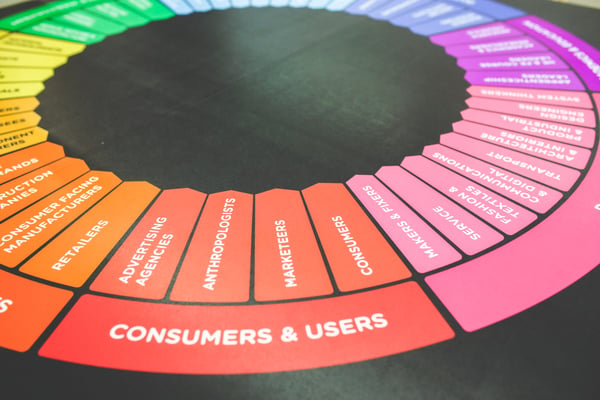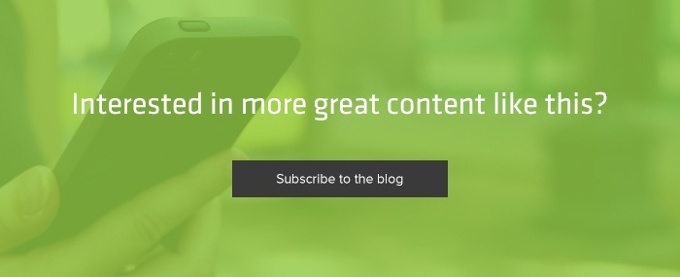Digital First: Making the Transition From Print
Your digital transformation requires a carefully planned and well-executed strategy driven by a deep understanding of your audience. You gain more leads, referrals, and customers when folks feel like you understand them and their needs.
The quest of transforming your business into a “digital first” operation and making the transition from print can be a very similar journey when compared to cloud adoption. The U.S. federal government instituted the “Cloud First Initiative” in 2010, requiring all federal agencies to prefer cloud services as opposed to maintain or proliferating traditional on-premise infrastructure or off-the-shelf software solutions. Government bodies like the General Service Administration (GSA) and the National Institute of Standards and Technology (NIST) put forth cloud standards and developed cloud-based applications.
Mandates help create alignment. However, they can be a bit too binary, black/white. That's why the latest cloud strategy from the federal CIO is "Cloud Smart.” Essentially, the new guidance says the cloud is perfect for some use cases, but not all. Likewise, we should consider customer communications in the same way: some use cases demand digital, others may be better suited if not for print, then at least for a page-centric or document-centric format.

Printed communications may have their place, but digital first opens new opportunities.
Benefits: Why Go Digital First
A recent MIT Sloan report indicates that strategy is more important than technology, and the idea that by digitizing a few documents is the sum of your ‘digital first’ efforts, well that isn’t going to cut it. In the survey, only 15% of participants in the beginning stages of going digital reported having a solid digital transformation strategy.
For the companies that are more “digitally mature,” 81% of respondents reported having a clear strategy, delivering results that by going digital first, these companies boosted their engagement in finding new employee talent and expanding their customer base that transformed their business models.
Plus, by going digital first, these companies also found additional benefits of:
- Directly communicating with the customer, nearly instantly
- Meeting the audience where they are: digital/omnichannel experience
- Increasing engagement and loyalty by putting focus back on the customer
- Saving money and increasing sales
- Boosting productivity
How to Make the Digital First Transition
Before you spend any resources, the first step you should take is to build your digital first strategy in the background before you completely slash print. Turn traditional strategy on its head, work backwards and dare to rethink how your industry does business, so that you truly strive to innovate not just in your communications, but your customer interactions as well, when making your digital first transition.
McCormick & Company, a flavor and spice manufacturer developed an algorithm called FlavorPrint that represents the organization’s flavors via a vector of 50 data points. While this algorithm is excellent for recipe recommendation, the vision for it serves as a consortium of flavors that allows the brand to redefine itself as a food experience company. Eventually, McCormick recognized that they would be able to tailor their digitized flavorings to cultural and personal taste. From there, the company and the development team realized that the FlavorPrint technology could progress from a stand-alone algorithm into its own standalone technology company, which they transformed into Vivanda.
Think about that: a digital first strategy can lead to growing whole new companies in some cases.
Of course, big growth can happen incrementally as you make your transition from print to digital first. Take “baby steps” and keep users/subscribers updated as you update. For example, one of Topdown’s customers, a large state government agency, started using email and text messages to inform its customers of progress updates on their claims. The agency can deliver more updates, faster and cheaper, now when they use email and SMS versus previously printed and mailed updates.
Speaking of updates, companies should gain ongoing feedback at every stage of the transition, framing changes before customers do. By taking a proactive approach, you ensure that your customers remain engaged, and you earn their loyalty by putting their valuable input into use. Before implementing new digital channels, companies may add links to a survey or feedback page to submit suggestions for digital communications issues. The upshot: get ahead of improving the user experience by interacting with the individuals that you impact the most.
Know your strategy and the order in which you will make the transition from print, so everyone is on the same page. Aside from automated billing notices, companies could use customized templates, as we do with INTOUCH, to issue updates across multiple channels.
Remind customers that value remains the same and that they could even save money with this transition. The company can also link this transition from print to digital first to broader social missions of going green and connecting to the world as they create new innovations in the way they conduct day-to-day business.
There’s no one-size-fits-all solution for digital success. However, its foundation is built on a better understanding of the audience and deeper use of analytics.
Scaling back printing doesn’t mean you lose quality, connectivity, or the perception of reliability from your customers. It offers an opportunity to consider new technologies and apps and scale up your business strategically.
Subscribe to this blog for more insights into creating a digital first strategy. Or get in touch with Topdown to explore technologies that can help you to identify and then transition the use cases that make the most sense to driver through digital channels.
Image: Pexels







